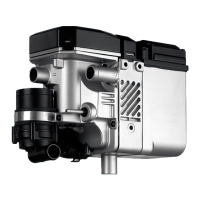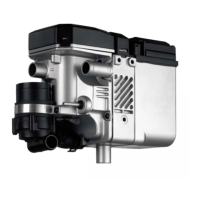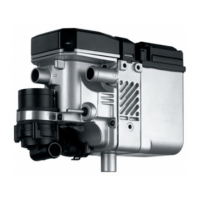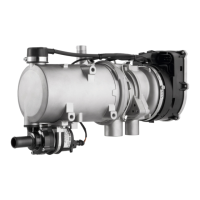8 Servicing Work DBW 2010 / 2016
803
8.6 Visual inspections and installation
instructions
8.6.1 Connection to the vehicle cooling system
The heater should be installed as low as possible to permit
automatic bleeding of the heater and circulation pump. This
is particularly important as the circulation pump is not self-
priming.
The heater must be connected to the vehicle cooling system
as shown in Fig. 802. The system must contain at least
10 litres of coolant.
In the vehicle cooling system or with a separate heating cir-
cuit, only pressure relief valves with an opening pressure of at
least 0.4 bar and a maximum of 2.0 bar may be used.
The coolant hoses supplied by Webasto must always be used.
If other hoses are used, they must at least comply with DIN
73411. The hoses must be routed without kinking and, if pos-
sible, uphill to ensure proper bleeding.
Hose connections must be supported by hose clips so they
cannot slip off.
NOTE
The tightening torques of the hose clamps used must be
observed.
Care must be taken to bleed the cooling system before the
heater is taken into service for the first time or after refilling
with fresh coolant. Heater and lines must be installed in such
a way as to ensure static bleeding.
Malfunctions due to overheating may occur during heating
operation if the heater and lines have not been bled correctly.
Proper bleeding can be recognised from the virtually silent
operation of the circulation pump.
8.6.2 Connection to the vehicle fuel system
The fuel is taken from the vehicle fuel tank or from a separate
fuel tank.
8.6.2.1 Fuel lines
Fuel lines must be installed with an upward inclined if possi-
ble to prevent air inclusions. Connections within the line must
be secured with hose clamps if no mechanical screw fittings
are used.
If fuel hoses are used, the hoses supplied or offered by
Webasto must always be used. If other fuel hoses are used,
they must at least comply with DIN 73379. Fuel hoses must
not be kinked or twisted and must be secured with clamps at
distances of approx. 25 cm.
The materials commonly used in vehicle construction, e.g.
steel, copper and plastic lines of soft, light and temperature-
stabilised PA11 or PA12 (e.g. Mecanyl RWTL) in accordance
with DIN 73378, can be used as fuel lines while observing the
respective connection technology.
The following must always be observed when installing fuel
lines:
• Lines must be protected against the effects of tempera-
ture
WARNING
The outer jacket of the heater can reach the ignition temper-
ature of diesel fuel in case of overheating!
• Lines must be protected against stone impact
• Dripping or evaporating fuel must neither collect
nor ignite on hot parts or electrical equipment.
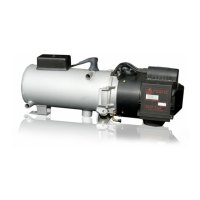
